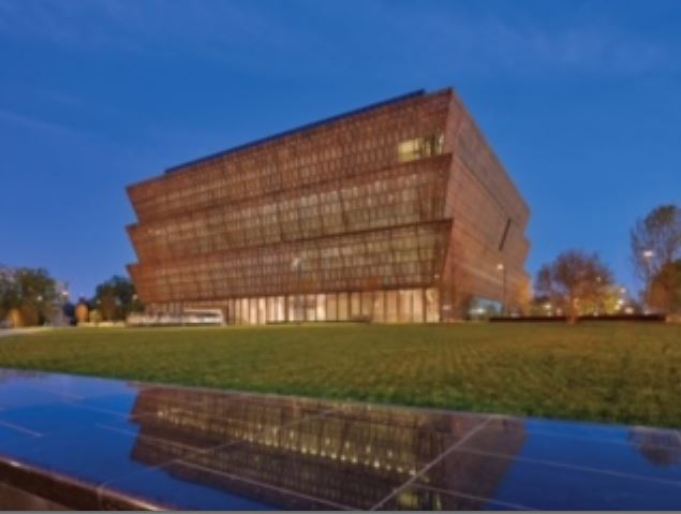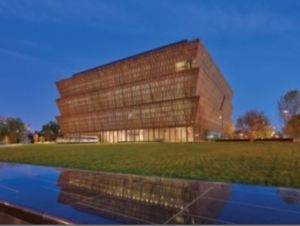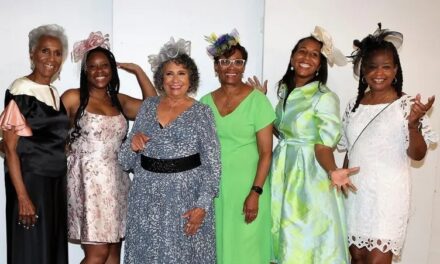

By Ralph E. Moore Jr.
Special to the AFRO
The beautiful National Museum of African American History and Culture in Washington, D.C. was designed by Black Americans. Isn’t that something? If you haven’t noticed, the exterior of the structure was built to look like a slave ship. It is an incredibly creative and clever use of architecture and again, Black folks did it!
Black people are not typically associated with architecture, “the art and technique of designing and building,” according to Britannica. It is not the same as construction; It is the thinking, planning and sketching out before axes, trowels, hammers and concrete are employed. The vision in detail is figured out in advance by the architects.
African Americans have created architectural designs since the early days of slavery in 1619. Black folks built the “big houses” on the plantations where the masters and their families lived comfortably. And Blacks did all they could to make the slave quarters as comfortable as possible despite the crowdedness, the lack of temperature control (with few fireplaces or slaves to fan away the hot, southern air) and the indecent housing generally. Around the time of slavery, free Blacks were contracted to design plantation layouts, while enslaved persons were hired out to other slave owners to construct, add on to and maintain properties. Skills were just as much a part of the massively lucrative enslavement economy as the enslaved as property themselves and their free labor. Everything derived from slaves could be stolen and/or sold. And it was. And that’s how America was built.
Philadelphian Phillip Freelon, a Black man, was the architect for the African-American museum in D.C., referenced earlier, which opened in 2016. Professor Wallace A. Rayfield, of Tuskegee Institute, designed a significant number of Black churches including, in 1911, the Sixteenth Street Baptist Church in Birmingham, Alabama, where four little girls lost their lives during a Sunday school bombing on Sept. 15, 1963. Paul Revere Williams graduated from the University of Southern California as an architect and designed houses for Hollywood stars as well as an upscale restaurant at LAX, the Los Angeles Airport.
The first African-American member of the voice of their profession, The American Institute of Architects (AIA) was Paul Williams in 1923. At that time there were few Black architects in the nation. Among his most notable works, he died in 1980, were fancy homes for the likes of Lucille (I Love Lucy) Ball and Frank Sinatra.
William Sidney Pittman lived from 1875-1958 and is thought to be the first of Black architects to get a federal contract, a building commemorating the first slaves’ arrival at Jamestown in Virginia. He attended Tuskegee, then Drexel Institute in Philadelphia before becoming the first from his race to practice architecture in Texas, where he died penniless in 1958.
Moses McKissack, III (1879-1952) designed the Martin Luther King memorial in Washington, D.C. Albert Irvin Cassell (1895-1969) designed buildings for both Howard and Morgan State Universities.
Vertner Woodson Tandy of Kentucky (1885-1949) is best known for designing homes for some of Harlem, NY’s wealthiest residents. His most famous work was Villa Lewaro for Madame C.J. Walker, who became a self-made millionaire with her cosmetics empire.
Norma Merir Sklarek (1928-2012) was the first African-American woman licensed as an architect in America. She was a role model for many African-American women who followed her into the profession. Her extreme attention to detail during the construction phase of projects and her management skills were simply outstanding.
The work of the aforementioned Black architects and others speaks well for them. Though they are the “hidden figures” of designing, building and construction, their work is that much more important. Doing their jobs wasn’t easy, and we all should be grateful they do their work so very well.
Help us Continue to tell OUR Story and join the AFRO family as a member – subscribers are now members! Join here!
The post Blacks and architecture: If we build it they will come appeared first on AFRO American Newspapers .










